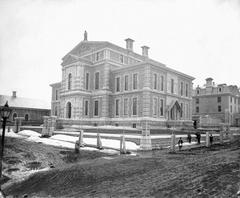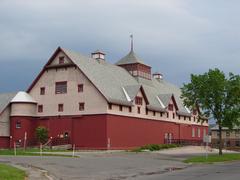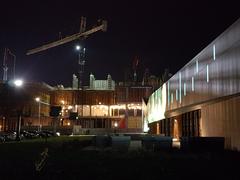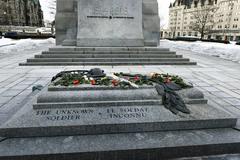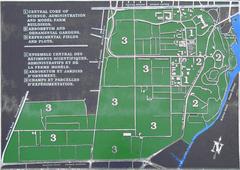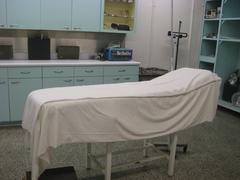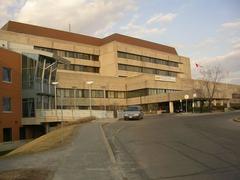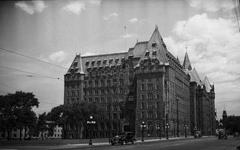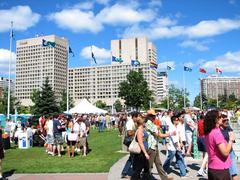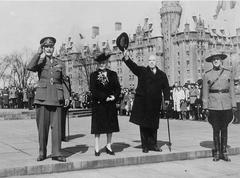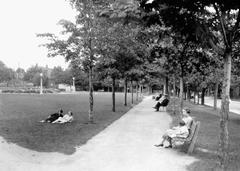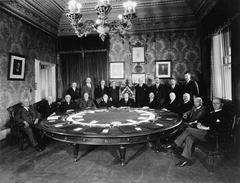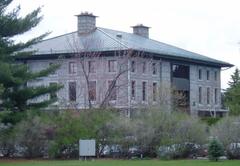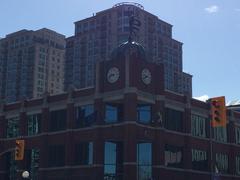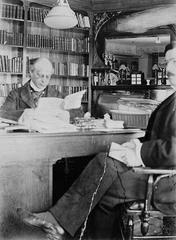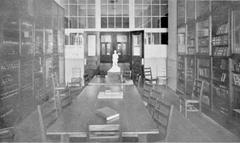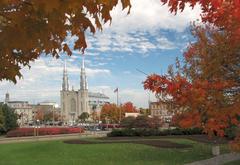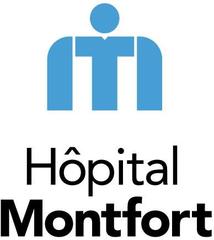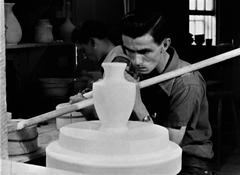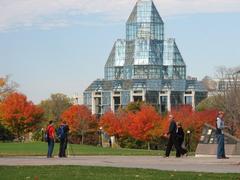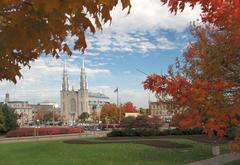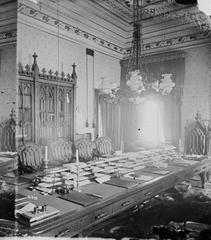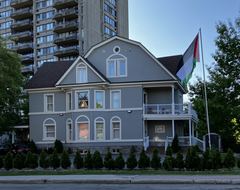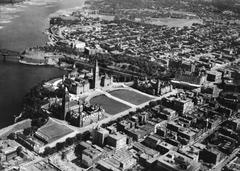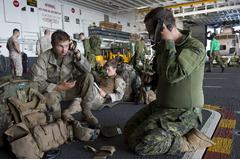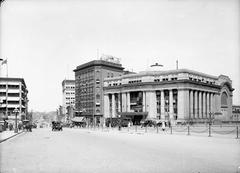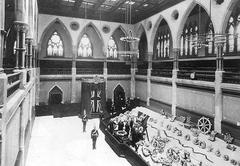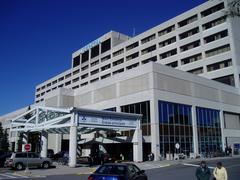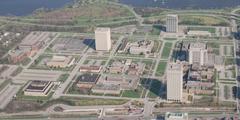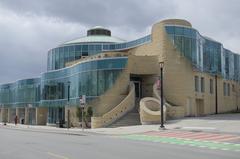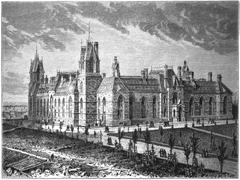
Royal Ottawa Mental Health Centre: Visiting Hours, Historical Significance, and Visitor’s Guide
Date: 04/07/2025
Introduction: The Royal Ottawa Mental Health Centre’s Legacy and Impact
The Royal Ottawa Mental Health Centre (ROMHC), often referred to as “The Royal,” is a landmark in Canada’s mental health landscape. Founded in 1910 as the Lady Grey Hospital, originally established to treat tuberculosis, the institution has since evolved into a premier psychiatric facility recognized nationally for its comprehensive, compassionate, and innovative approach to mental health care, research, and community outreach (Wikipedia; The Royal). Situated in Ottawa, the nation’s capital, The Royal now serves more than 62,000 clients and families annually, integrating clinical care, advanced research, and public education.
This guide explores the centre’s historical transformation, specialized programs, research leadership, visitor information—including hours and accessibility—plus practical tips for engaging with The Royal’s mission. Whether you’re visiting a loved one, attending a public event, or interested in the evolution of mental health care in Ottawa, this article provides the essential knowledge to navigate and appreciate The Royal’s unique role (Capital Magazine).
Table of Contents
- Origins and Early Years (1910–1970)
- Transition to Mental Health Care and Renaming
- Modernization and Redevelopment (1999–2006)
- Integration with Research and Academic Medicine
- Responding to Community Needs and Societal Change
- The Royal’s Place in Ontario’s Mental Health System
- Community Engagement and Ongoing Evolution
- Historical and Social Significance
- Visiting the Royal Ottawa Mental Health Centre
- Summary and Call to Action
- References
Origins and Early Years (1910–1970)
The Royal’s journey began in 1910 as the Lady Grey Hospital, a sanatorium built to address the tuberculosis crisis in early 20th-century Canada. Over six decades, it treated approximately 11,000 tuberculosis patients, serving as a regional healthcare anchor (Wikipedia). The hospital’s design and operation focused on convalescence and public health priorities of its time.
By 1970, medical advances had nearly eradicated tuberculosis in Canada, prompting the closure of the sanatorium and setting the stage for a new chapter (Wikiwand).
Transition to Psychiatric Care and Renaming
With tuberculosis no longer a pressing public health threat, the institution shifted focus, reopening as the Royal Ottawa Hospital. This transformation mirrored a broader recognition of mental health as a vital component of public well-being. The hospital expanded its mandate to include psychiatric care, becoming a designated Schedule 1 facility under Ontario’s Mental Health Act, which enabled involuntary patient admissions and affirmed its prominence in the province’s mental health network (Ontario.ca).
Notably, the hospital gained experience in forensic psychiatry, managing high-profile cases and cementing its role in the intersection of mental health and justice (Wikiwand).
Modernization and Facility Redevelopment (1999–2006)
By the late 20th century, the hospital’s infrastructure lagged behind contemporary psychiatric standards. In 1999, a $143–150 million redevelopment project commenced, resulting in a modern eight-storey, 284-bed facility, opened in 2006 (GBA Group; Wikipedia). This was Canada’s first public-private partnership (P3) hospital project, also adding a 96-bed specialized long-term care unit—the first of its kind in Ontario.
The hospital was rebranded as the Royal Ottawa Mental Health Centre, emphasizing its expanded role in research, teaching, and specialized mental health services.
Integration with Research and Academic Medicine
Today, The Royal is part of the Royal Ottawa Health Care Group (ROHCG), which encompasses the Brockville Mental Health Centre, the University of Ottawa Institute of Mental Health Research (IMHR), and the Royal Ottawa Foundation for Mental Health (Wikipedia). This integration fosters clinical excellence, research breakthroughs, and the training of future mental health professionals (Capital Magazine).
Responding to Community Needs and Societal Change
The Royal’s evolution reflects changing societal attitudes and growing demand for mental health services, especially highlighted during the COVID-19 pandemic. Initiatives such as the Prompt Care Clinic (C-PROMPT) provide rapid access to mental health services, particularly for those new to the system (Capital Magazine). The Royal’s leadership in controversial and pioneering research further demonstrates its commitment to advancing the field (Wikipedia).
The Royal’s Place in Ontario’s Mental Health System
As a Schedule 1 psychiatric facility and a designated treatment site under the Criminal Code, The Royal is central to both civil and forensic mental health care in Ontario (Ontario.ca). Its comprehensive services include inpatient and outpatient care, long-term support, research, and outreach (The Royal).
Community Engagement and Ongoing Evolution
The Royal continues to innovate, exemplified by projects like the Matthew Perry House supportive housing initiative, which illustrates the centre’s responsiveness to evolving community needs and commitment to recovery-oriented care (CBC News; OCH-LCO). Its leadership prioritizes collaboration, equity, and reducing stigma (Capital Magazine).
Historical and Social Significance
Leadership in Mental Health Care
The Royal has been at the forefront of transforming mental health care in Canada. Its affiliation with the University of Ottawa and the creation of the IMHR position it as a leader in mental health research and treatment (The Royal). The butterfly symbol, representing personal and societal transformation, underscores its advocacy for destigmatizing mental illness.
Community Integration and Outreach
Embracing a “hospital without walls” philosophy, The Royal’s outreach extends to long-term care homes, shelters, and community centres, breaking down barriers to care for vulnerable populations (The Royal - Community Programs).
Specialized National Programs
The Operational Stress Injury (OSI) Clinic at The Royal is Canada’s only OSI clinic within a specialized academic mental health centre, serving military and RCMP personnel (The Royal - OSI Clinic). The Substance Use and Concurrent Disorders Program is accessible by self-referral for those with addiction and co-occurring mental health needs (The Royal - Substance Use Services).
Research and Innovation
The IMHR conducts cutting-edge research in psychiatric genetics, neurobiology, neuroimaging, and therapeutic interventions. Initiatives like the Music and Mental Health Research Clinic and a Brain Canada grant for advanced neuroimaging platforms reflect The Royal’s commitment to integrating science and care (Open Access Government; The Royal: News).
Education and Public Awareness
The Royal is a teaching hospital, training health professionals and offering public education events such as “Conversations at The Royal.” Collaborative efforts with Ottawa Public Health support system planning and mental health literacy (Ottawa Public Health - Mental Health Dashboard).
Cultural and Artistic Initiatives
Partnerships with the Ottawa Art Gallery, such as the “Creative Space” program, provide weekly art workshops to foster social inclusion and wellness among those with lived experience of mental illness (OAG - Creative Space).
Economic and Societal Impact
By supporting recovery and reducing hospitalizations, The Royal lessens the economic burden of untreated mental illness. Its fundraising arm, the Royal Ottawa Foundation, supports research, care, and public outreach (The Royal Foundation).
Visiting the Royal Ottawa Mental Health Centre
Visitor Hours and Protocols
ROMHC’s visiting hours are flexible and encourage family involvement, but they vary by unit and patient needs:
- Inpatient Units: Visits usually permitted daily with some restrictions.
- Virtual Visits: Available for those unable to visit in person.
All visitors must check in at main reception, present photo ID, and comply with security and privacy protocols. For up-to-date hours and entry requirements, see ROMHC Visiting Hours and Parking.
Accessibility and Travel Tips
The Royal is fully accessible with barrier-free entrances, elevators, and designated parking (ROMHC Accessibility). Address: 1145 Carling Avenue, Ottawa, ON. OC Transpo routes 85 and 101 provide easy public transit access. On-site parking is available for a fee.
Supporting The Royal
Community members can support The Royal by donating, volunteering, or participating in public education sessions and outreach events (Donate to The Royal). The centre also offers family support groups and information resources.
Special Initiatives and Community Projects
Matthew Perry House Ottawa
The new Matthew Perry House on The Royal’s campus will provide supportive housing and wraparound services for individuals in addiction recovery, using a trauma-informed, community-centred model (OCH-LCO; Carlington Community).
COVID-19 and Health Precautions
As of July 2025, visitors may be required to wear masks, undergo symptom screening, and practice hand hygiene. Policies are regularly updated—check COVID-19 Updates at ROMHC before visiting.
Frequently Asked Questions (FAQs)
Q: What are the visiting hours at ROMHC?
A: Visiting hours vary by unit. Confirm with the unit or main reception, or check the official visiting hours page.
Q: Is parking available?
A: Yes, on-site parking is available for a fee. Accessible spaces are close to the entrance.
Q: Can I book a tour?
A: Public tours are not generally offered, but community events and public education sessions are hosted regularly.
Q: Is ROMHC accessible?
A: The facility is fully accessible to individuals with disabilities.
Q: What COVID-19 precautions are in effect?
A: Masking, symptom screening, and hygiene protocols may apply. See latest updates.
Summary and Call to Action
The Royal Ottawa Mental Health Centre exemplifies the evolution of mental health care—from its roots as a tuberculosis sanatorium to an innovative, recovery-oriented academic centre. It leads in research, community engagement, and patient-centred programming, while maintaining rigorous safety and accessibility standards. Visitors are urged to plan ahead, observe guidelines, and engage with The Royal’s mission—whether by supporting its foundation, attending events, or advocating for mental health in their communities (Wikipedia; The Royal; Capital Magazine).
Take Action:
- Check current visiting hours before your visit.
- Support The Royal through donations or participation in public events.
- Download the Audiala app for more local health insights.
- Stay informed by following The Royal on social media and exploring related Ottawa mental health resources.
References
- Royal Ottawa Mental Health Centre - Wikipedia
- The Royal Ottawa Mental Health Centre Official Website
- Capital Magazine: Transformative Leadership at The Royal
- GBA Group: Royal Ottawa Mental Health Centre Redevelopment
- Ontario.ca: Designated Psychiatric Facilities and Hospitals
- CBC News: Coalition Calls for Matthew Perry House Plans to be Halted
- OCH-LCO: Matthew Perry House Ottawa
- Ottawa Public Health - Mental Health Dashboard
- OAG - Creative Space
- Open Access Government - The Royal
- Carlington Community - Info Session on Royal Ottawa Housing Initiative
For visual resources, maps, and further updates, refer to The Royal’s official website.




